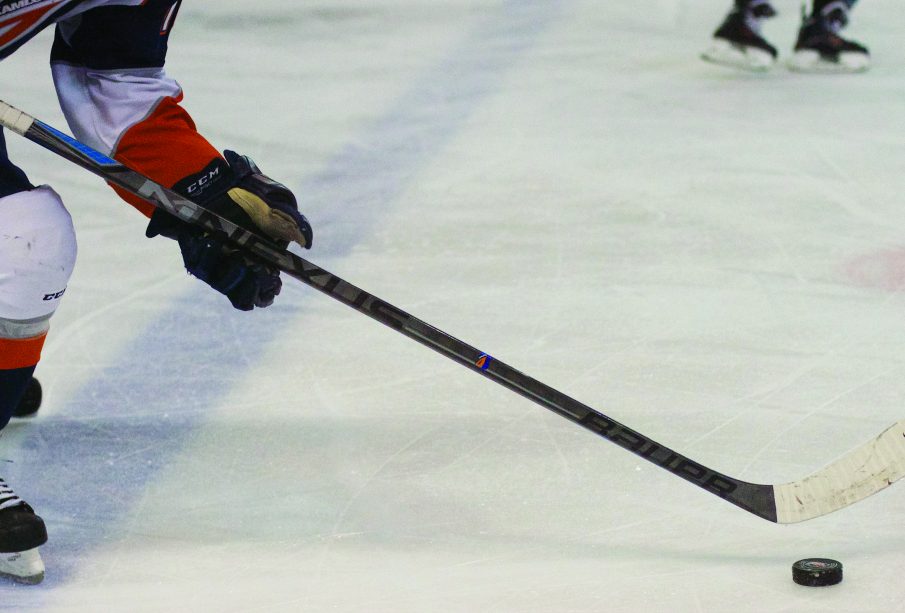Sports history: The ice hockey stick

How the stick became so slick
When people talk about Canada, they often utter expressions about our love of hockey. What is more Canadian than a good old fashioned game of hockey? Honestly not a whole lot. This makes it fitting to discover that the origins of the hockey stick came from the Mi’kmaq First Nation, who lived in the Maritimes throughout the 1800’s. These sticks were constructed from birch and hornbeam trees. Surprisingly, the design of these sticks resembled that of modern day hockey sticks as they were carved out of one continuous piece of wood.
Originally, hockey sticks did not possess the curve that we are so accustomed to seeing now, and were straight sticks that were carved. While trying to figure out how to manufacture the curve that we have grown so used to playing with, manufacturers tried a two-piece method which allowed for a partial curve to be present. Eventually they got the hang of it and were able to carve the ‘banana bend’ into the stick, This has revolutionized how we choose to shoot the puck and without this slight curve the way in which we play the game would have looked very different for us.
Many believe that the Chicago Blackhawks player (and now hall of famer) Stan Mikita was the one who came up with the idea of playing with a curved stick. Allegedly, he caught his stick between boards in the arena and the force broke his stick into a V shape. He discovered that he was able to produce faster and more powerful shots with the curved blade. After this he went on to try and perfect curving the blade of the stick by running it under hot water and bending them in door jams as he was unaware of the work that was being done by manufacturers at the time.
Although we now had the shape that we are used to, by the 1920s we still had a problem. The weight of these sticks was difficult for athletes to maneuver with any kind of agility, which added an extra, unnecessary, challenge to the game. This caused a new challenge for manufactures which led to the use of fiberglass. They would utilize Aspen wood which is overall a lighter type of wood and cover it in fiberglass to help lower the risk of the stick breaking. This helped to significantly lower the weight from the original sticks which helped to improve player performance as well.
Seems as though things were all worked out by the 1960s. We had lighter sticks that allowed for faster and more powerful shots. We had everything we could ever want from this piece of equipment. However, in the 1970’s the National Hockey League (NHL) had to implement rules involving the amount of curve that the players’ sticks could have. This reduced the curve of sticks to ½ inch limit. The reason for this necessary rule implementation was that the shot velocity was increasing while the control of the shots was rapidly decreasing, which was a risk to those on and off the ice.
It appeared as though manufactures needed to go back to the drawing board as players were complaining that they had lost some of the feel due to the lack of curve in their sticks. This brought the blame around to the overall weight of the stick once more.
Back to the drawing board brought forth the aluminum sticks in the 1980s. 100 per cent aluminum did not last long however as there were massive amounts of complaints about the feel that it provided. Players were after the feel that wooden sticks provided and wanted the weight of the aluminum sticks.
In the 1990s manufacturers finally thought that they found the winning combination. They developed sticks that had aluminum shafts and wooden blades. This was beneficial as the shafts were strong and durable whereas the blades were cheap and easy to replace if needed. The use of aluminum in the shaft also allowed manufacturers to develop a consistent weight and flex which was not possible with fully wooden sticks. Although this seemed to provide the best of both worlds, this was not the case and many still had complaints.
In the early 2000s, we were introduced to the one-piece composite sticks. These consisted of aluminum and composite shaft and blade combinations. This brought back the feel that so many individuals enjoyed from the wooden sticks while allowing them to be lighter and more durable. This has provided faster and powerful shots once more that allows for the pace of the game to be what we know and enjoy today.
Although many individuals enjoy and still utilize these one-piece sticks, we have to keep pushing forward in our innovation. To get a better more effective stick manufacturers have been experimenting with other materials. Currently they are looking at carbon fibers and other high strength composites as a way to improve the overall look, feel and effectiveness of future sticks.
A hockey stick may just appear to be a basic form of equipment. But this simple staple is one that has shaped the way in which we play and enjoy the game.








